Yogyakarta Art Guide: Explore Vibrant Murals & Street Art
For a travel experience beyond the usual, this Yogyakarta art guide invites you into the city’s vibrant world of mural art—a journey through expression, resistance, and imagination. Keep in mind that Yogyakarta, often affectionately called Jogja, is a city where tradition and creativity beautifully intertwine, and its street art turns alleys and riversides into a living museum that speaks straight from the soul.
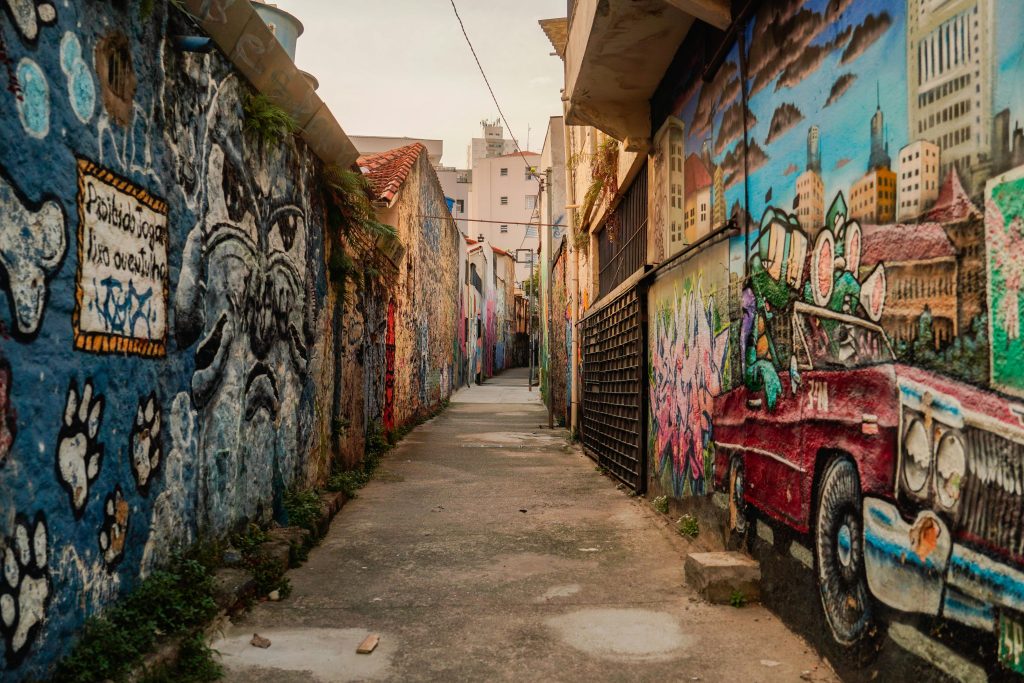
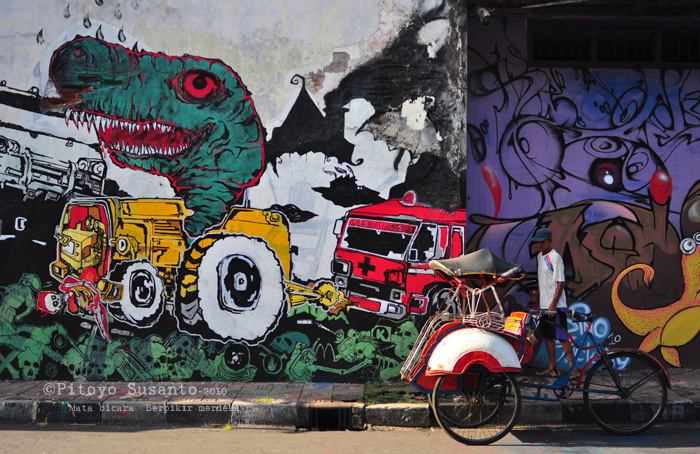
| credit: mobgenic
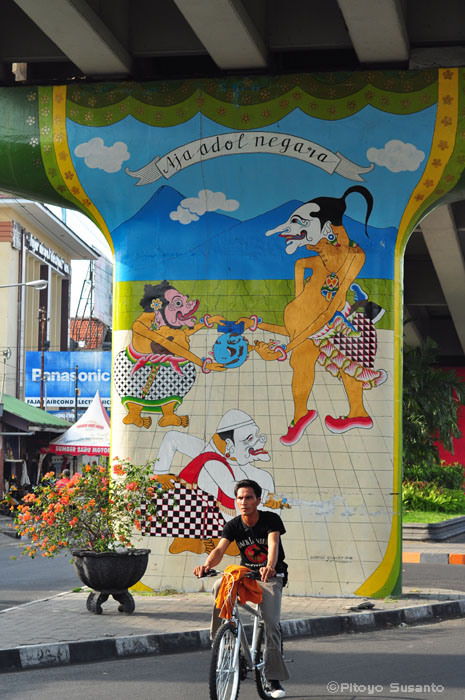
Where It All Began: Art as a Voice of the People
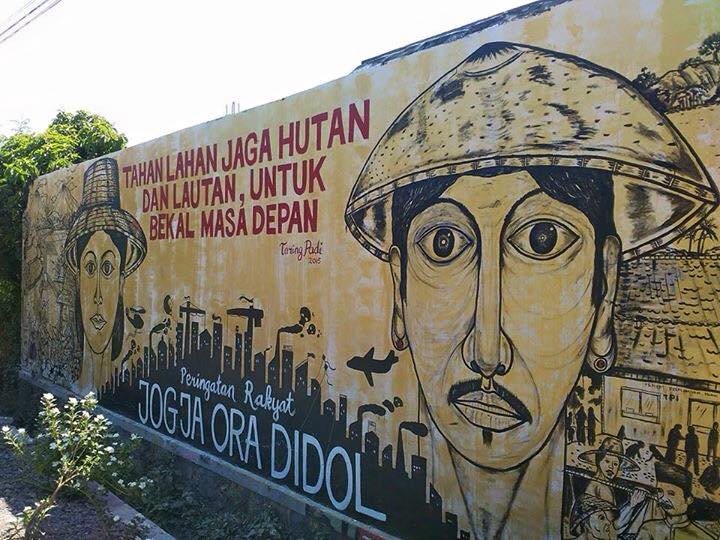
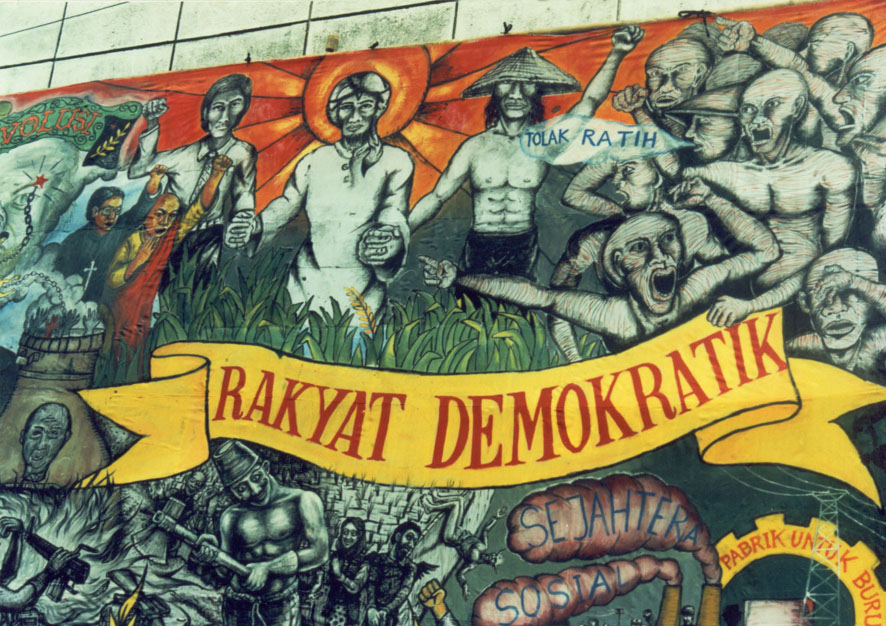
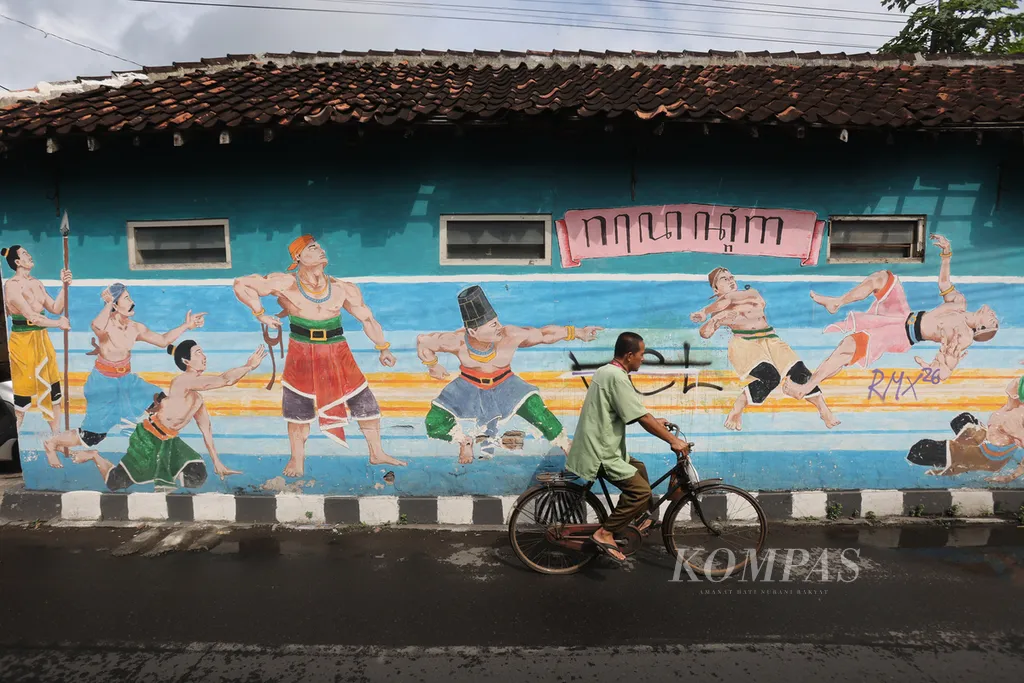
Long before murals became trendy backdrops for selfies, they were voices of resistance in Jogja. In the late 1990s, amid Indonesia’s political upheaval and the fall of Suharto’s regime, the collective Taring Padi emerged as a powerful force. Formed by a group of students and activists in the wake of Reformasi, Taring Padi turned public walls into bold, rebellious manifestos. Their woodcut-style murals—raw, intricate, and unapologetically political—shouted out against militarism, economic inequality, environmental destruction, and the lingering grip of authoritarianism. More than art, their work was protest in visual form.
Around the same time, another influential group called Apotik Komik began treating the streets as a living canvas. Comprised of young artists from ISI (Institut Seni Indonesia), they believed art could heal a fractured society. Their groundbreaking “Sama-Sama” project in the early 2000s—organized in collaboration with international artists—turned the act of mural-making into a communal experience. Residents painted side by side with artists, transforming grey alleyways into colorful expressions of everyday life, humor, hope, and struggle.
These early efforts laid the groundwork for what we now recognize as Indonesian street art. Jogja’s murals were never just about decoration—they were declarations. They carried the city’s pulse, its frustrations, its laughter, and its unspoken prayers. Even today, you can still trace this spirit in the layers of paint—rebellious yet poetic, critical yet community-rooted, always deeply connected to place and people.
And while new generations bring in fresh styles—from surrealism to pop culture mashups—the DNA of Jogja’s street art remains the same: a canvas for voices that won’t be silenced.
A New Chapter: Community Murals and Everyday Joy
In recent years, Yogyakarta has seen a vibrant new chapter in its mural movement. While political and activist murals remain part of the scene, street art has increasingly become a dynamic medium for community expression and neighborhood pride. This shift reflects a deeper, more grassroots involvement where residents take ownership of their environment through creativity.
As highlighted in Mobgenic, residents of kampungs like Suryatmajan, have embraced mural art to brighten their neighborhoods and strengthen social bonds. Rather than waiting for official programs, residents have picked up brushes themselves, painting walls with scenes drawn from Javanese folklore, children’s dreams, and environmental themes—turning ordinary alleys into colorful storytelling spaces that celebrate local identity.
The local government has recognized the power of murals to build community and attract visitors, actively supporting mural projects through cultural grants and public art initiatives. This encouragement has helped nurture a collaborative atmosphere between artists, residents, and officials, fostering a sense of shared pride and responsibility for public spaces.
In addition to grassroots efforts, several companies in Yogyakarta have incorporated mural art into their corporate social responsibility (CSR) programs. These collaborations provide funding and materials, helping expand the scale and reach of mural projects. Despite commercial sponsorship, the murals remain deeply authentic, reflecting the creativity and spirit of Jogja rather than just marketing agendas.
Neighborhoods like Kampung Dipowinatan and the riverside Kampung Code have become open-air galleries where youth and elders alike gather to create and appreciate art. These spaces serve not just as colorful backdrops for photos but as vibrant, living galleries that embody the hopes, struggles, and values of their communities.
This flourishing mural culture contributes significantly to Yogyakarta’s growing reputation as an art tourism destination. It offers visitors a rich alternative to traditional sights like temples and batik markets—inviting them to experience the city’s heart and soul through the vivid, ever-evolving art on its walls.
Where to Find the Best Murals in Yogyakarta
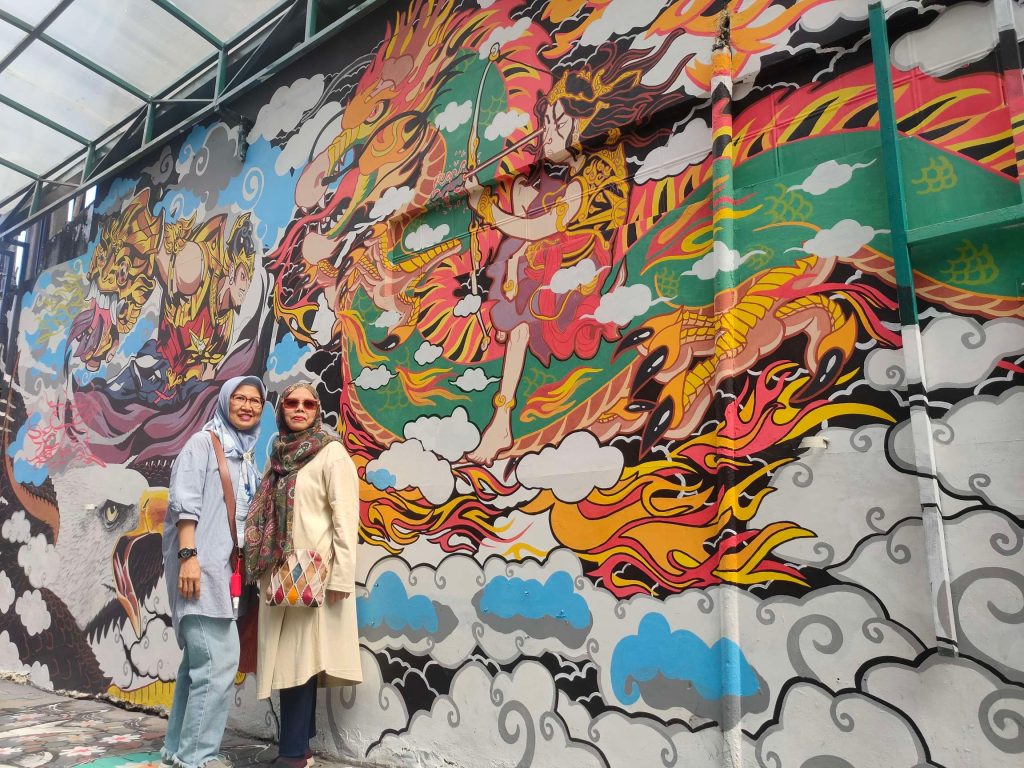
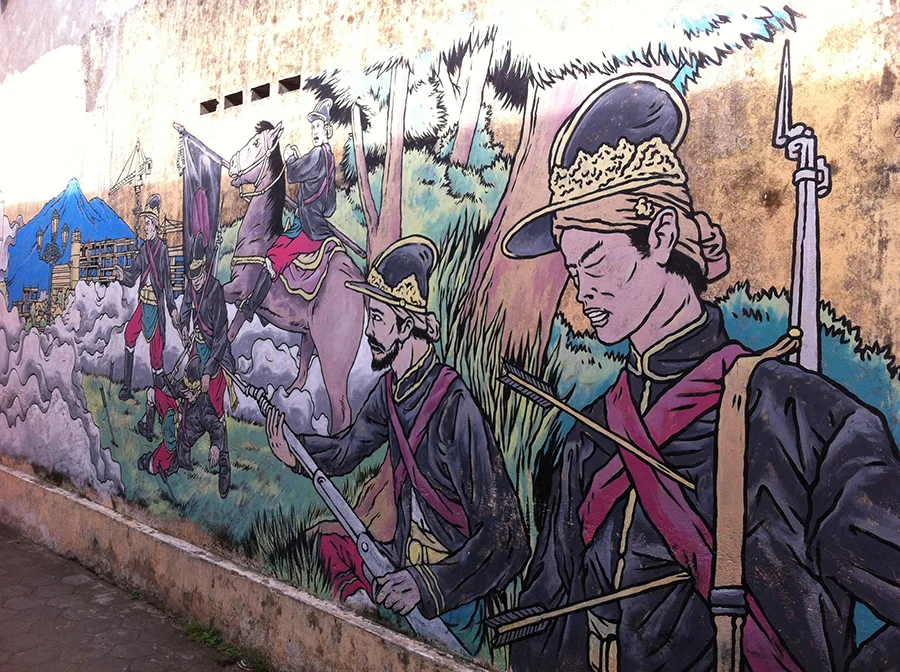
Curious where to begin your Jogja street art guide? Here are some of the best mural spots in Yogyakarta:
Kampung Suryatmajan
This vibrant community-run corridor is a colorful showcase of Yogyakarta’s artistic spirit. The murals here blend traditional Javanese culture—like wayang puppetry and batik motifs—with imaginative themes such as space exploration and fantasy worlds. The area feels like an open-air gallery where local artists and residents collaborate, creating a lively fusion of heritage and modern creativity.
Kampung Dipowinatan (South of Malioboro)
Nestled just south of the bustling Malioboro street, this neighborhood surprises visitors with its walls covered in thought-provoking murals. Many of these artworks offer social commentary on everyday life, politics, and community issues, reflecting the voices and stories of locals. The alleys here are charming and intimate, inviting visitors to slow down and soak in the powerful messages behind the art.
Kampung Sayidan
Situated along the riverside, Kampung Sayidan is a quaint neighborhood that has blossomed into a vibrant mural hub. The artwork here evokes a strong sense of nostalgia, portraying scenes of daily life, local traditions, and the simple joys of community living. Walking through this kampung feels like stepping into a visual diary that honors Yogyakarta’s cultural roots and warmth.
Jalan Tirtodipuran & Mantrijeron
South of the Kraton (palace), these neighborhoods are a hub of hip creativity. Known for their bohemian vibe, you’ll find a mix of art galleries, vegan cafés, tattoo parlors, and politically tinged murals tucked along the roadsides. The murals here often tackle contemporary issues—freedom of expression, consumerism, gender—and are as intellectually rich as they are visually striking.
Lapangan Minggiran
Near a local football field, this open-air space features works by both amateur and professional artists. The murals here are bold, community-driven, and constantly evolving. This area is also close to several small art studios and independent galleries, which means the murals are often extensions of local art movements.
Sewon Area
Located just a bit south of Yogyakarta city, the Sewon area is known for its quiet charm and rich creative scene. It’s home to ISI (Institut Seni Indonesia), the city’s renowned art university. This academic influence gives Sewon an edge in experimental and boundary-pushing street art. International artists, including the acclaimed stencil artist Anagard, have left their mark here with massive, intricate murals. From abandoned walls to curated street corners, this area pulses with raw artistic energy.
Cool Down with Local Refreshments
Art walks under the tropical sun can be as intense as they are inspiring—so don’t forget to take breaks!
Whether you’re strolling through mural-filled kampungs or biking between creative corners, Yogyakarta’s heat calls for refreshing pauses. Thankfully, this city makes it easy to recharge. From iced drinks at humble angkringan stalls to cozy cafés and lively food corners, here are a few perfect stops to cool down and soak in more of Jogja’s everyday charm.
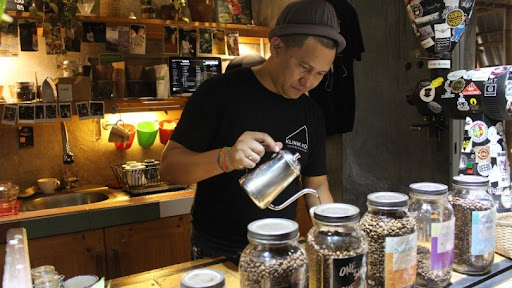
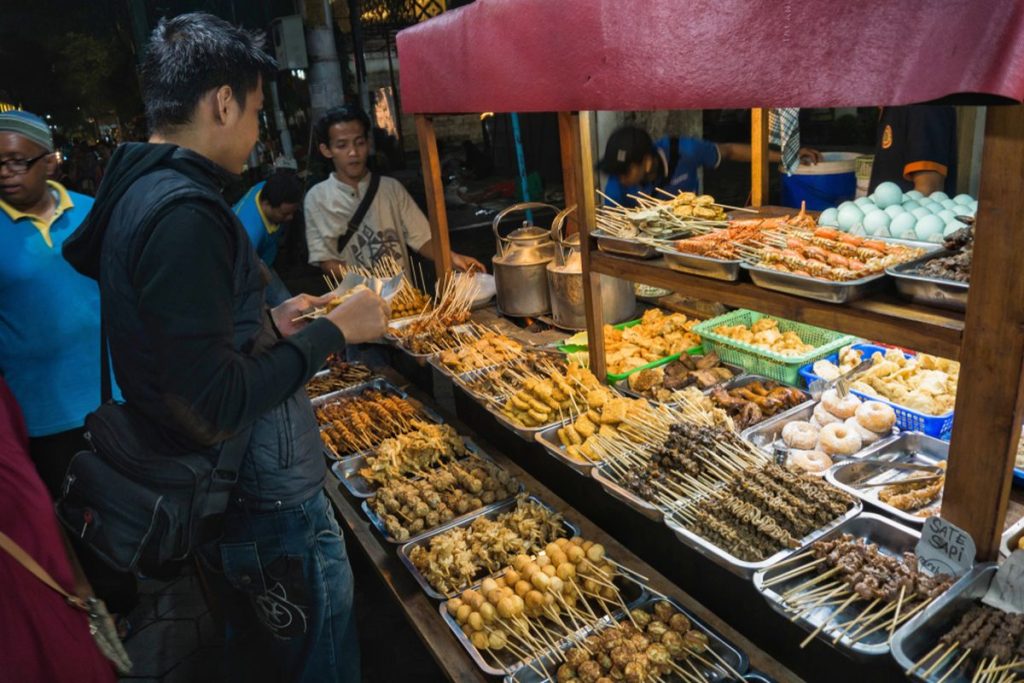
Angkringan Delights:
After soaking in the vibrant street art at Kampung Suryatmajan or Dipowinatan, a perfect way to refresh is by visiting a traditional angkringan. These humble street-side food stalls are a beloved part of Javanese culture—originally simple, mobile carts where locals would gather in the evenings to enjoy affordable snacks and drinks. Today, angkringan can be found all over Yogyakarta throughout the day, serving as popular, budget-friendly spots where Jogja’s community comes to unwind, socialize, and savor local flavors.
One of the most famous is Angkringan Kopi Joss near Tugu train station, renowned for its unique kopi joss—coffee brewed hot and then served with a glowing piece of charcoal dropped directly into the cup. The sizzling charcoal adds a distinctive smoky aroma and flavor, creating a truly unforgettable coffee experience. Whether in the afternoon or evening, these simple eateries offer a genuine taste of everyday life in Jogja.
Coffee Culture:
For those craving a true coffee experience, Yogyakarta’s thriving coffee scene is not to be missed. Klinik Kopi, located near the city center on Jalan Wongsodirjan, is a standout spot. Here, the owner is more than a barista—he’s a passionate coffee storyteller who serves every drop with heart and deep knowledge. As one of the pioneers of Jogja’s coffee culture, he can explain everything from bean origin to brewing techniques, making each cup an educational and flavorful journey.
In the past five years, the city has blossomed with numerous cafés serving authentic Indonesian coffees, showcasing rich and diverse local flavors. Another favorite, Luwabica Art’n’Coffee House, blends art and coffee in a cozy atmosphere, reflecting Jogja’s creative spirit alongside its love for great brews.
A Note From The Road ✍️
The murals of Yogyakarta aren’t polished showpieces—they’re personal, passionate, and alive. They peel and fade, they get painted over and reborn. Some shout in protest, others whisper of home and memory.
The most beautiful thing about street art in Jogja is its humanity. These walls belong to no single artist—they belong to the neighborhoods, to the city, to everyone who walks past and pauses to look.
In many ways, Yogyakarta mural art is a mirror of the city’s soul: rebellious, joyful, ever-changing. Whether you’re following a guide or simply wandering, you’ll find yourself stepping into stories painted on the skin of the city itself.
So bring your walking shoes. Let the alleys guide you. And let Yogyakarta show you what happens when a city decides to speak—with brushes, not words.
